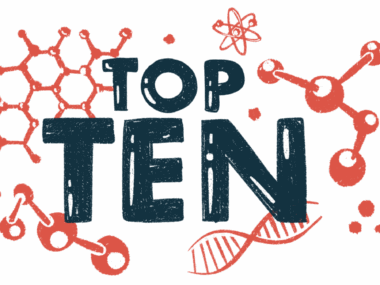Others Provide Support and a Mirror Within the ‘Compassion Space’
Written by |

(Graphic by Dr. C)
The “O” in the CHRONDI Creed stands for “others” — the other people around us who support, teach, and love us, and who pray and care for us. Other people can also provide a mirror that helps us to see how others perceive our actions. If we can objectively view this reflection, we can gain wisdom about the consequences of our actions and then make informed choices that will affect how we interact with others.
The relationships we have with other people provide support and a mirror seen clearly within the compassion space (see diagram below).
 Columnist Sherri Woodbridge has written about relationships while dealing with Parkinson’s disease, saying that we need to work on keeping relationship magic alive. She advises readers to seek help with relationship issues rather than ignoring them. It takes work to keep relationships healthy and growth-promoting. We don’t put our foot into the stream of life the same way twice — our lives continuously change, and our relationships need to adjust to these changes.
Columnist Sherri Woodbridge has written about relationships while dealing with Parkinson’s disease, saying that we need to work on keeping relationship magic alive. She advises readers to seek help with relationship issues rather than ignoring them. It takes work to keep relationships healthy and growth-promoting. We don’t put our foot into the stream of life the same way twice — our lives continuously change, and our relationships need to adjust to these changes.
Growth-promoting relationships with others happen within what I call the “compassion space.” It is a shared space between the self and the other and our well-being possibility. Movement also takes place within this space. Reaching out to the other and then retreating to self (“push the person away” and then later “seek to get closer”) is one of the most common relationship dances.
A similar dance happens when we seek to help someone achieve well-being or receive assistance with our own health. It is a dance of getting closer to well-being and then retreating from the experience. I have termed this “compassion space resistance,” and it is the primary source of compassion fatigue. The latter does not arise from successful compassion that leaves one with more energy than it takes. Compassion space resistance can drain emotional energy and lead to caregiver burnout.
Imagine that your lifelong partner has a chronic illness. You want to help your partner move toward a place with less suffering. But compassion resistance can happen if you spend days arguing, your partner neglects his rehabilitation plan, or neither of you is willing to take responsibility for your half of the well-being journey.
Successful movement within the compassion space involves a shift toward well-being. When the self and the other are in the compassion space where this shift occurs, they experience a special type of growth-promoting relationship called the healing relationship. This relationship is often interpreted as sacred or a gift, and something that is allowed and not grasped.
Once the healing relationship is established, then the shift toward well-being becomes a stepping stone for the other to use in his or her journey toward maintaining an improved quality of life. The self then becomes a witness stepping stone, using supportive words such as, “Remember I was there with you.” Then, as a witness, he asks the other person to recall how much better she felt after the event. This witnessing happens within the support relationship where both parties discuss how each person can follow his or her path to well-being.
Growth-promoting relationships involve entering the compassion space in the roles of the self and the other. If we can understand the dance that takes place inside that space — the dance in which the relationship changes from healing to support, to resistance, and then back again — then we can more clearly envision our own path to well-being.
Growth-promoting relationships are fundamental to success in the battle against chronic disease. Healthy relationships depend upon the successful communication of our needs to each other. If you are waiting for the other person to read your mind and recognize your needs, then you will be disappointed.
Much of the suffering in the world happens when people do not enter the compassion space. Instead, they throw words at each other from inside their personally constructed self-bubbles. We think that we are safe inside our self-bubbles. But we can’t hear the needs of the others in our lives from inside our bubbles and this hinders our ability to develop growth-promoting relationships.
Our caregivers need our attention and compassion. The others in our lives help us to mirror ourselves and provide us with support in our battle against our chronic illness. Use of the compassion space helps us to express our individual needs and feel heard. It takes practice to move around in the compassion space, and the CHRONDI elements help us with this practice.
Have you had experiences within the compassion space? Did you like anything that was expressed in this column? Please share your thoughts in the comments to help other readers gain a broader perspective on helping and receiving help from others.
***
Note: Parkinson’s News Today is strictly a news and information website about the disease. It does not provide medical advice, diagnosis or treatment. This content is not intended to be a substitute for professional medical advice, diagnosis, or treatment. Always seek the advice of your physician or another qualified health provider with any questions you may have regarding a medical condition. Never disregard professional medical advice or delay in seeking it because of something you have read on this website. The opinions expressed in this column are not those of Parkinson’s News Today or its parent company, Bionews Services, and are intended to spark discussion about issues pertaining to Parkinson’s disease.







cân điện tử 80 tấn
Hey very cool website!! Man .. Excellent .. Wonderful
.. I will bookmark your blog and take the feeds additionally?
I am happy to find so many helpful information here within the put up, we want work out
extra techniques in this regard, thanks for sharing.
. . . . .
Dr. C
Thanks for the support and positive feedback. It is greatly appreciated. I love hearing that people are taking the information and using it to help others.